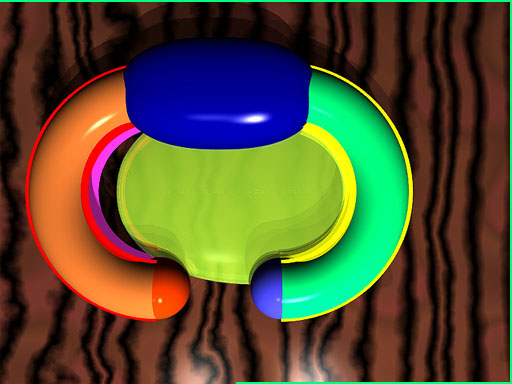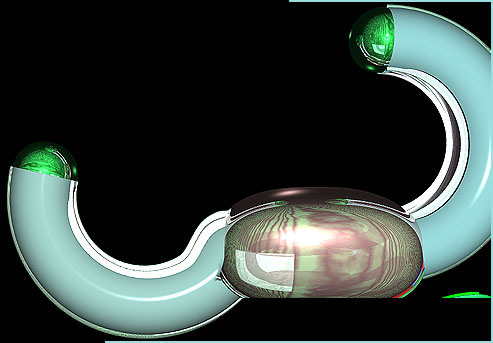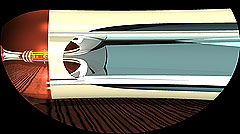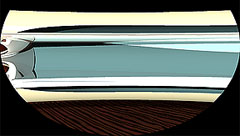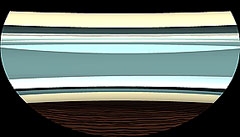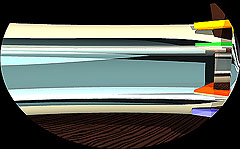 Most contain at least 2 screens which alternate extrusion or level to provide
gapfree sequencing. This unit shows a nearly completed extrusion of 1 polymer
screen.
Most contain at least 2 screens which alternate extrusion or level to provide
gapfree sequencing. This unit shows a nearly completed extrusion of 1 polymer
screen. 
 In
general, hooks models are activated by pressing the hemisphere at the terminus
of a hook.
In
general, hooks models are activated by pressing the hemisphere at the terminus
of a hook.
 The hooks contain some different features. They are more complex but those
who prefer them are adamant in their belief that these models, whether of
polymers, metals, or composites, hold far more data and display a greater
range of data forms with speed, clarity, and ease.
The hooks contain some different features. They are more complex but those
who prefer them are adamant in their belief that these models, whether of
polymers, metals, or composites, hold far more data and display a greater
range of data forms with speed, clarity, and ease. 
 After activation, simultaneous
pressure on the hemispheres moves data and sequences the screens. Options
within the dataflow such as presenting audio or additional visuals are accepted
or denied by pressure on the hemispheres.
After activation, simultaneous
pressure on the hemispheres moves data and sequences the screens. Options
within the dataflow such as presenting audio or additional visuals are accepted
or denied by pressure on the hemispheres. 
 How do users know this? They just do. They know it as they know a purple ellipse
near the horizon means the rains begin in 2 days and the Lake will soon follow.
Citizens grow using comm units. They are routinely instructed in sending and
receiving by their growers soon after arrival. It's basic to adequate civic
functioning. That's why I'm doing it for you.
How do users know this? They just do. They know it as they know a purple ellipse
near the horizon means the rains begin in 2 days and the Lake will soon follow.
Citizens grow using comm units. They are routinely instructed in sending and
receiving by their growers soon after arrival. It's basic to adequate civic
functioning. That's why I'm doing it for you. 
 Some hooks can be manipulated by voice.
Some hooks can be manipulated by voice. 
 Here's a hook with 1 side cracked.
Here's a hook with 1 side cracked. 
 But units are quite helpful and if they sense difficulties, even from a mediator,
they will query regarding assistance they can provide.
But units are quite helpful and if they sense difficulties, even from a mediator,
they will query regarding assistance they can provide. 
 Some models forego screen extrusion and employ an earlier mode of data presentation,
that of running data in the hook's inner slot:
Some models forego screen extrusion and employ an earlier mode of data presentation,
that of running data in the hook's inner slot:
 For pleas, this came to be seen as too slow and understated though it remains
an adequate means to data relay.
For pleas, this came to be seen as too slow and understated though it remains
an adequate means to data relay. 
 So far we've explored basic use features: activating, accessing the dataload,
presentation and sequencing variations.
So far we've explored basic use features: activating, accessing the dataload,
presentation and sequencing variations. 
 But you may want to see some of the power sources and propulsion modes.
But you may want to see some of the power sources and propulsion modes. 
explore
power and propulsion?

This
is where
